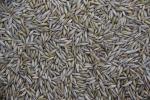Biodiversity Foundation Project: The role of resilience in the composition of weed communities in cereal agroecosystems. Adaptive responses of weed flora to climate change.
- Type Project
- Execution 2017 -2019
- Scope Europeo
- Main source of financing Biodiversity Foundation
- Project website Web proyecto (Fundación Biodiversidad)
To improve the adaptation of weeds in cereal agroecosystems to climate change, INIA (National Institute of Agricultural and Food Research) has completed a project facilitating a weed classification study for local and regional use in the agricultural sector. The Institute of Agricultural and Food Research and Technology (INIA) has completed the project "The role of resilience in the composition of weed communities in cereal agroecosystems. Adaptive responses of weed flora to climate change," which was supported by the Biodiversity Foundation of the Ministry for Ecological Transition through its 2017 grant application period. The objective was to identify the climate change adaptation strategies developed by extensive livestock farmers in Spain within a framework of global change.
In the selected model area, a search was conducted using various data sources to obtain temperature data and gather information on weed species present in rainfed cereal agroecosystems ranging from 300 to 1,500 m in altitude. The results obtained from the databases were confirmed by monitoring weed flora along an established central-southern route.
Climate change entails a process of modification, adaptation, and self-organization of relationships within ecosystems, which need to readjust their balances for long-term sustainability. Biodiversity is an essential variable in agricultural systems, as is the way in which interactions between the constituent parts of the agroecosystem are organized and balanced. However, there is a significant lack of information on the succession of balances and imbalances that occur in agroecosystems.
The overall objective of this project was to study the influence of temperature variation on weed communities that are part of the biodiversity of cereal agroecosystems in a model area with distinct climatic environments based on altitude differences, as a measure of adaptation to climate change.
This study has provided a description of the distribution of weed populations in cereal agroecosystems, at local and regional scales, sensitive to temperature changes, thus contributing to the detection of temperature changes that may occur in these systems. Weed species identified in databases have been classified as allies for the sustainability of cereal agroecosystems. Using an association tree scheme between weed communities and the altitude-temperature ranges of the study area, the resilience of weed species to climate change has been visualized.







